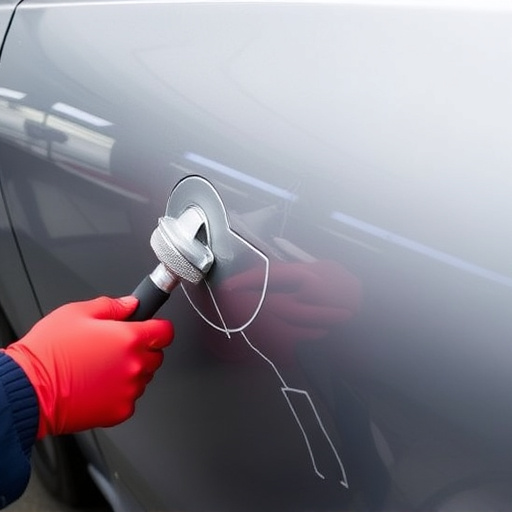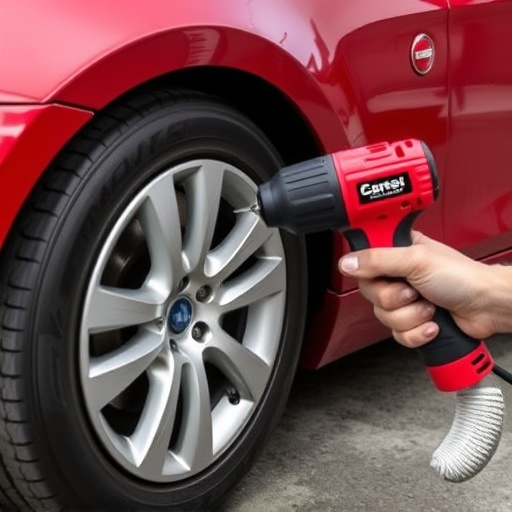Regular and clear repair progress updates are crucial for accountability in vehicle maintenance post-accidents or damage. Repair facilities are legally required to inform stakeholders about key milestones like assessments, parts ordering, and critical repairs. Implementing these updates through dedicated platforms or personal interactions builds client trust and ensures consumer protection laws are met, empowering informed choices while managing expectations.
In today’s digital age, transparent communication is paramount, especially regarding repair processes. This article delves into the significance of repair progress updates and explores legal considerations that underpin this transparency. We examine the legal framework governing these updates, provide best practices for businesses to enhance consumer trust, and discuss the rights and responsibilities of consumers throughout the repair journey. By understanding these dynamics, stakeholders can navigate the landscape more effectively.
- Understanding Repair Progress Updates: Legal Framework
- Implementing Transparency: Best Practices for Businesses
- Consumer Rights and Responsibilities in Repair Processes
Understanding Repair Progress Updates: Legal Framework

In the realm of vehicle maintenance, especially following accidents or damage, understanding and providing clear repair progress updates is crucial for fostering transparency between repair shops, insurance companies, and clients. These regular updates ensure that everyone involved remains informed about the status of repairs, including any unexpected issues or delays. Such transparency builds trust and streamlines the claims process.
The legal framework surrounding repair progress updates varies by region, but generally, repair facilities are mandated to provide timely notifications regarding significant milestones in the repair process. This includes initial assessments, parts ordering, and completion of critical repairs like fender repair or auto glass replacement. Compliance with these regulations not only maintains a level of accountability but also ensures that clients receive the services they expect from professional car bodywork services.
Implementing Transparency: Best Practices for Businesses

Implementing transparency in communication is a best practice that businesses, especially those specializing in car collision repair and vehicle restoration, should adopt to foster trust with their customers. Providing regular and detailed repair progress updates allows clients to stay informed throughout the process, reducing uncertainty and anxiety. This is crucial for maintaining customer satisfaction and loyalty, as it demonstrates a commitment to open and honest communication.
Businesses offering car repair services can implement several strategies to ensure transparency. Firstly, establish clear channels for communication, such as dedicated websites or mobile apps, where customers can easily access real-time updates on their vehicle’s restoration status. Regularly update these platforms with precise information regarding the current stage of repair, expected completion time, and any potential delays. Additionally, personal interactions, like phone calls or in-person meetings, should be just as transparent, ensuring every customer receives consistent and accurate repair progress updates.
Consumer Rights and Responsibilities in Repair Processes

In any repair process, whether it’s a minor fender bender or a complex luxury vehicle repair after a car collision, consumers have rights and responsibilities that must be clearly understood. Consumer protection laws mandate regular repair progress updates to keep them informed about the status of their vehicles, ensuring transparency throughout the entire process. These updates not only help in managing expectations but also empower consumers to make informed decisions regarding their repairs.
Consumers are entitled to timely communication, detailed estimates, and clear explanations of any additional work that may be required. They should be given options for repair methods and materials, understanding potential implications on both cost and quality. Meanwhile, consumers are responsible for providing accurate information about the incident and maintaining regular contact with the repair shop to facilitate repair progress updates. Active participation ensures a smoother process, minimizing misunderstandings or delays.
In conclusion, implementing transparent repair progress updates is pivotal for fostering trust between businesses and consumers. Understanding the legal framework governing these updates, adopting best practices, and recognizing consumer rights and responsibilities are essential steps towards a more open and efficient repair process. By prioritizing transparency, industries can enhance customer satisfaction and contribute to a sustainable economy.














